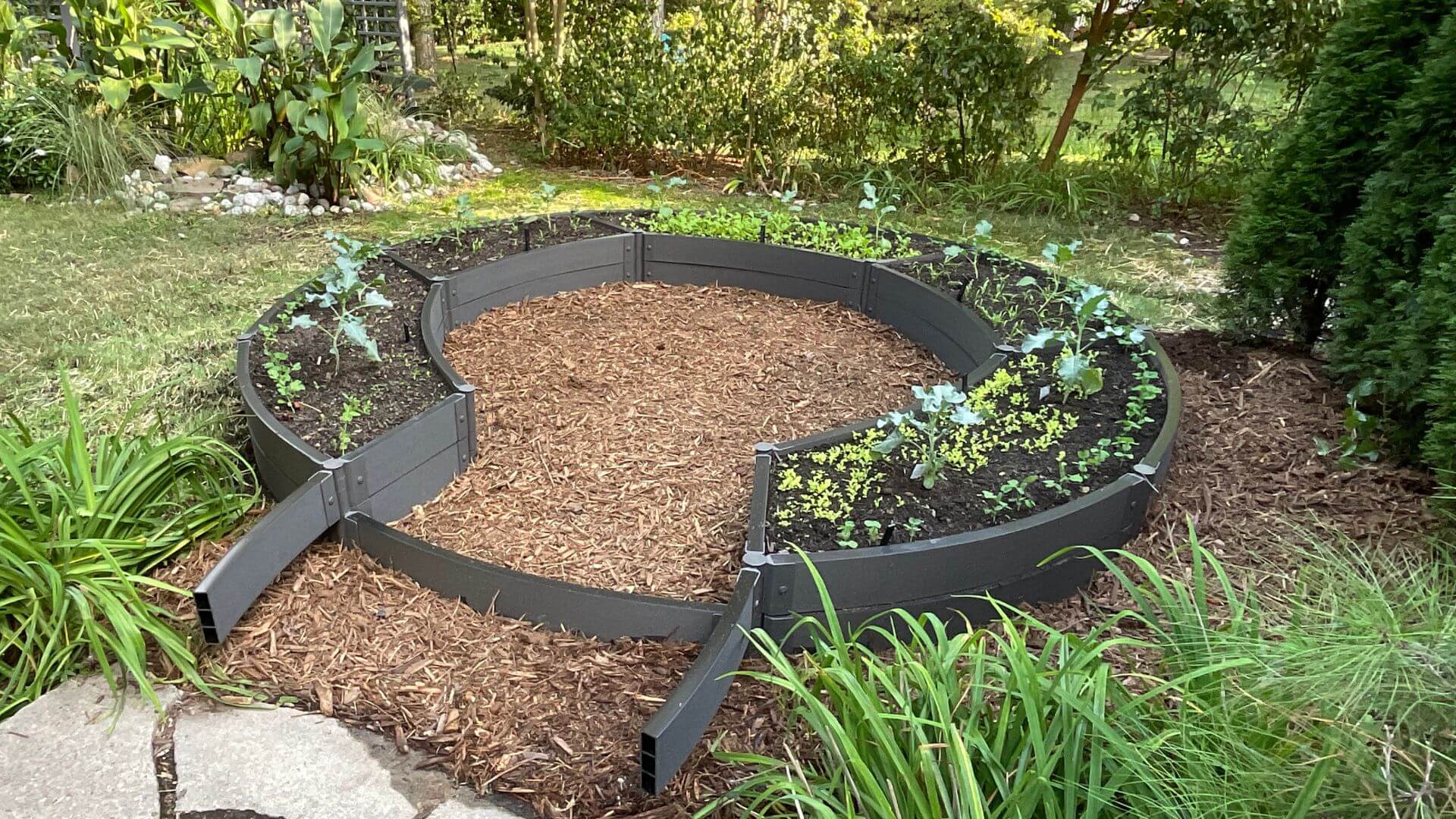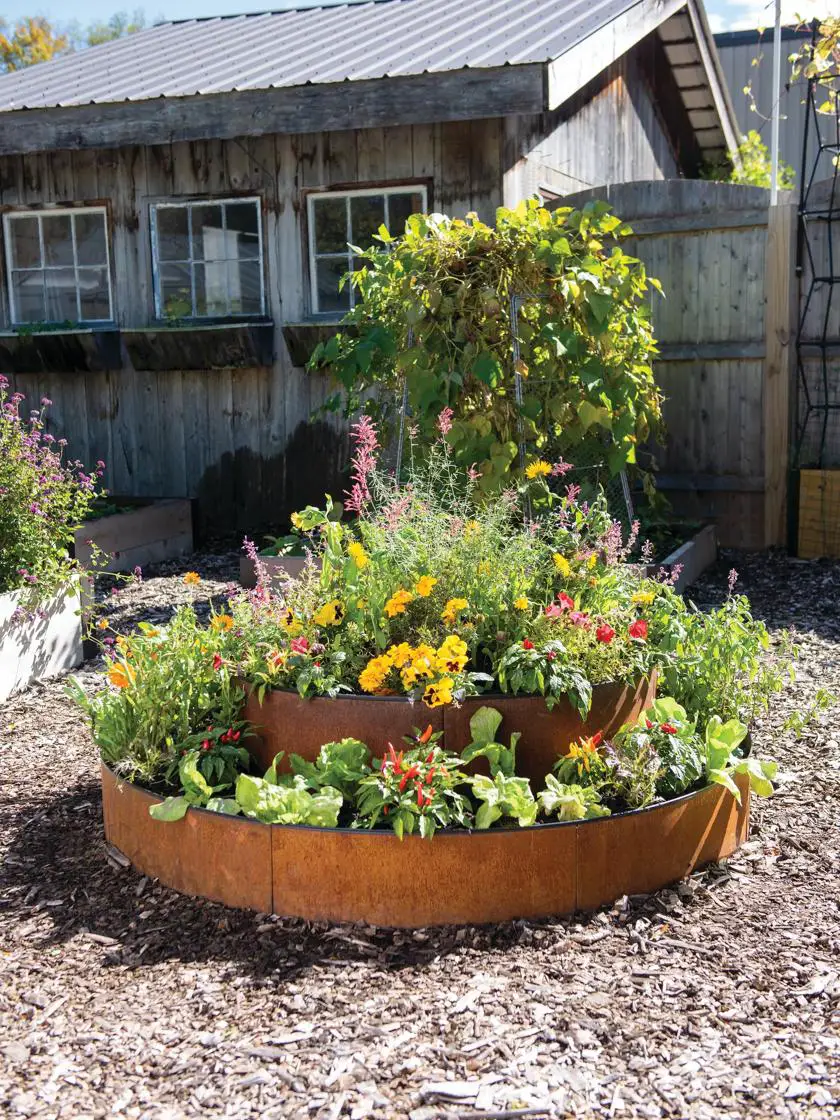Imagine stepping into your backyard and being greeted by a vibrant, lush garden that feels like your own personal oasis. Round raised bed gardens can make this dream a reality.
These innovative gardening solutions offer not only a visually appealing design but also an efficient way to grow your favorite plants, flowers, and vegetables. Have you ever felt overwhelmed by the idea of starting a garden or maintaining one? Round raised beds simplify the process, making gardening accessible and enjoyable for everyone, even if you lack a green thumb.
They’re not just about aesthetics; they’re about transforming your gardening experience into something truly rewarding. Discover how round raised bed gardens can enhance your outdoor space, boost your gardening success, and bring you closer to nature. Let’s explore the unique benefits and practical tips that will help you create a flourishing garden that you’ll be proud of. Stay with us, and you’ll soon see why this gardening trend is capturing the hearts of garden enthusiasts everywhere.

Credit: www.botanicalinterests.com
JUMP TO TOPIC
Benefits Of Round Raised Beds
Round raised beds offer a unique twist on traditional gardening. Their circular design isn’t just an aesthetic choice. It brings several practical benefits that can enhance your gardening experience. By understanding these advantages, gardeners can make informed decisions for their backyard oasis.
Space Efficiency
Round raised beds maximize space in small gardens. Their circular shape fits snugly into tight corners or awkward spaces. This allows you to plant more in less area. Every inch becomes usable, which is perfect for urban gardeners.
Improved Drainage
Raised beds naturally have better drainage. Water moves smoothly through the soil, preventing waterlogging. Round beds enhance this benefit by allowing water to flow evenly. No puddles form, keeping plants healthy and roots strong.
Enhanced Soil Quality
Control over soil quality is easier with raised beds. You choose the perfect mix for your plants. Round beds keep soil well-contained, preventing erosion. This leads to richer soil, full of nutrients needed for plant growth.
Design Ideas For Round Beds
Round raised bed gardens offer a unique twist to traditional gardening. They provide easy access from all sides, making planting and maintenance simple. Their circular shape adds a charming element to any garden space.
Round raised bed gardens bring a unique charm to any landscape. Their circular shape offers flexibility in design and plant arrangement. You can transform your garden into a stunning oasis with creative ideas. Explore the potential of round beds to enhance your outdoor space.Incorporating Paths
Paths around round beds improve accessibility and design. Create winding paths with gravel or stepping stones. They add visual interest and make plant care easier. Consider using mulch for a softer path look. Curved paths complement the round shape beautifully.Layered Planting
Layered planting adds depth and variety to round beds. Plant taller species in the center. Surround them with shorter plants to create a dome effect. Use a mix of colors and textures for visual appeal. This method optimizes sunlight for each plant layer.Decorative Edging
Decorative edging frames round beds and adds character. Use stones, bricks, or logs for a natural look. Metal or plastic edging provides a modern touch. Edging keeps soil contained and defines the bed’s shape. Choose a style that matches your garden theme. “`Materials For Construction
Round raised bed gardens offer a stylish and practical solution for growing plants. Made from durable materials like wood, metal, or stone, these gardens provide excellent drainage and easy access. Their circular shape fits well in small spaces, enhancing both functionality and aesthetics.
When crafting your round raised bed garden, the materials you choose play a crucial role in both functionality and aesthetics. Selecting the right materials can enhance the durability and visual appeal of your garden. Each option brings its own set of advantages and considerations, making your choice an important one. Let’s delve into the most popular materials you can use for constructing your round raised bed garden.Wood Options
Wood is a favorite for many gardeners due to its natural look and versatility. Cedar and redwood are excellent choices because they are naturally resistant to rot and insects. Pressure-treated wood is another option, offering longevity at a lower cost, though you should ensure it’s safe for vegetable gardening. Building with wood is simple. You can easily customize the size and shape of your bed. However, you might need to replace wooden beds every few years if they start to deteriorate.Metal Choices
Metal raised beds offer a modern, sleek design that can complement any garden style. Galvanized steel is a popular choice because it’s durable and resistant to rust. It also reflects sunlight, helping to keep the soil warm and extend your growing season. While metal beds are long-lasting, they can be pricier than wood. Also, consider the potential for the metal to heat up in very sunny climates, which might affect your plants.Using Stone Or Brick
Stone or brick beds are both sturdy and visually appealing. They add a classic, timeless look to your garden. Concrete blocks are easy to stack and arrange, making them a practical option for constructing your bed. These materials are virtually maintenance-free and can withstand harsh weather. However, they require more effort and skill to assemble compared to wood or metal. Are you ready to invest in a material that offers permanence and elegance? Choosing the right material for your raised bed garden can significantly impact your gardening experience. Whether you prefer the rustic charm of wood, the sleek durability of metal, or the classic elegance of stone, each material offers unique benefits. Consider your climate, budget, and personal style as you make your decision. What material will best suit your gardening vision?Choosing The Right Plants
Choosing the right plants for your round raised bed garden is crucial. It enhances growth, beauty, and harmony in your garden space. Select plants based on climate, soil, and sunlight. Consider what you enjoy eating and viewing. This guide will help you make informed choices.
Vegetables And Herbs
Vegetables like tomatoes, carrots, and spinach thrive in raised beds. They require good drainage and rich soil. Herbs such as basil, thyme, and cilantro grow well here. Their scents and flavors enrich your kitchen. Raised beds make harvesting easy and accessible.
Flowers For Aesthetics
Flowers add color and life to your garden. Marigolds, petunias, and pansies are great choices. They attract pollinators and beautify the space. Choose flowers that bloom in different seasons. This ensures year-round beauty and vibrancy.
Companion Planting
Companion planting boosts plant health and yields. Pair tomatoes with basil for better taste and growth. Plant marigolds with vegetables to deter pests. This method improves soil quality and plant resilience. It promotes natural synergy in your garden.
Maintenance Tips
Maintaining a round raised bed garden ensures vibrant, healthy plants. Proper care enhances growth and increases yield. Consistent attention keeps plants thriving. Here are essential maintenance tips to follow.
Watering Practices
Water early in the morning or late afternoon. This reduces evaporation. Use a drip irrigation system for efficiency. Ensure soil remains moist, not soggy. Check moisture levels regularly. Use mulch to retain soil moisture.
Weed Control
Remove weeds weekly to prevent nutrient competition. Hand-pulling is effective for small gardens. For larger areas, consider natural weed barriers. Mulching helps suppress weed growth. Avoid chemical herbicides to keep the soil healthy.
Fertilization Schedule
Fertilize plants every four to six weeks. Use organic compost for best results. Monitor plant growth to adjust nutrients as needed. Over-fertilization harms plant roots. Always follow package instructions for fertilizer use.

Credit: www.ollegardens.com
Seasonal Considerations
Round raised bed gardens offer versatility throughout the year. Understanding seasonal considerations ensures healthy growth and abundant harvests. Each season presents unique challenges and opportunities for your garden. Proper planning helps maximize yields and maintain plant health.
Planting In Spring
Spring is a time of renewal and growth. As temperatures rise, it’s ideal for planting most vegetables. Ensure soil is thawed and well-drained. Start with seedlings for early crops like lettuce and radishes. Consider companion planting to enhance growth. Flowers like marigolds can deter pests naturally.
Monitor weather forecasts for late frost warnings. Use covers to protect young plants. Incorporate organic matter to enrich soil. This improves fertility and moisture retention.
Summer Care
Summer requires diligent care for your raised beds. Watering becomes crucial during hot months. Consistent moisture is vital for plant health. Early morning or late evening watering reduces evaporation. Mulching helps retain soil moisture and keeps roots cool.
Watch for pests and weeds. Regular checks prevent infestations. Use organic pest control methods. Ensure plants have enough space and air circulation. This reduces disease risk.
Preparing For Winter
Winter preparation starts before the first frost. Clear beds of dead plants and debris. This prevents disease and pest overwintering. Add a layer of mulch or straw to insulate soil. Protect perennial plants with covers or cloches.
Consider cover crops to enrich soil for spring. They prevent erosion and improve soil structure. Plan next year’s garden layout during winter downtime. Reflect on past successes and challenges.

Credit: frameitall.com
Frequently Asked Questions
What Vegetables Should Not Be Grown In A Raised Bed?
Avoid growing sprawling or deep-rooted vegetables in raised beds. Corn requires too much space and depth. Pumpkins and squash spread widely, consuming space. Potatoes need deep soil for tubers. Tall plants like sunflowers may become unstable. Choose compact or shallow-rooted vegetables for optimal results.
How To Plant A Round Garden Bed?
Choose a sunny spot and clear weeds. Shape the bed into a circle. Add compost and till soil. Arrange plants in a circular pattern. Water thoroughly and apply mulch to retain moisture.
What Is The Best Shape For A Raised Bed?
The best shape for a raised bed is rectangular. It maximizes space and allows easy access from all sides. Rectangular beds are also ideal for efficient planting and crop rotation. Consider the width, typically no wider than four feet, to ensure you can reach the center without stepping on the soil.
How Deep Should A Raised Garden Bed Be For Vegetables?
Raised garden beds for vegetables should be 12 to 18 inches deep. This depth allows roots to grow efficiently. Ensure good drainage and nutrient-rich soil. Some vegetables require more depth, like carrots and potatoes. Check specific plant needs before planting.
Conclusion
Round raised bed gardens offer many benefits for home gardeners. They save space and make planting easier. The circular shape adds charm to any garden. Plus, they improve drainage and soil quality. You can grow a variety of plants in them.
Vegetables, herbs, and flowers thrive in these beds. Whether you’re a beginner or experienced gardener, they suit all levels. Enjoy fresh produce and beautiful blooms. Round raised beds enhance your gardening experience. They are a great addition to any outdoor space.
Consider starting one in your garden today. Enjoy the rewards of a productive and beautiful garden.

